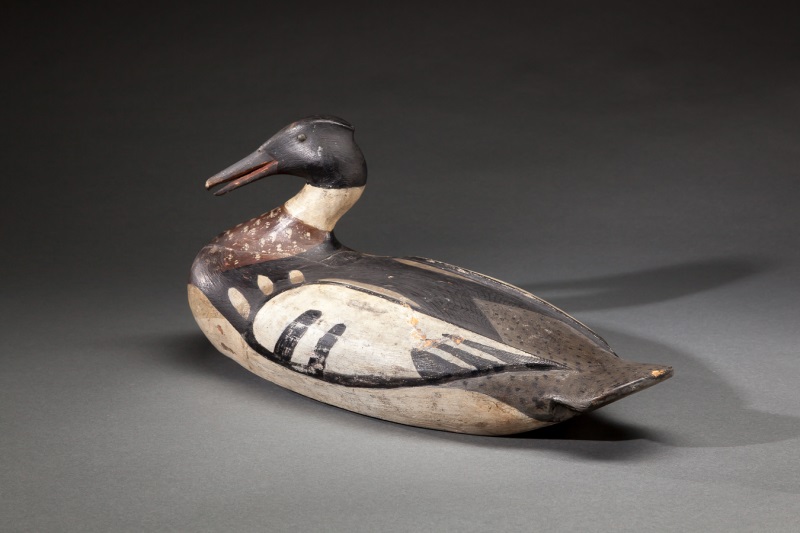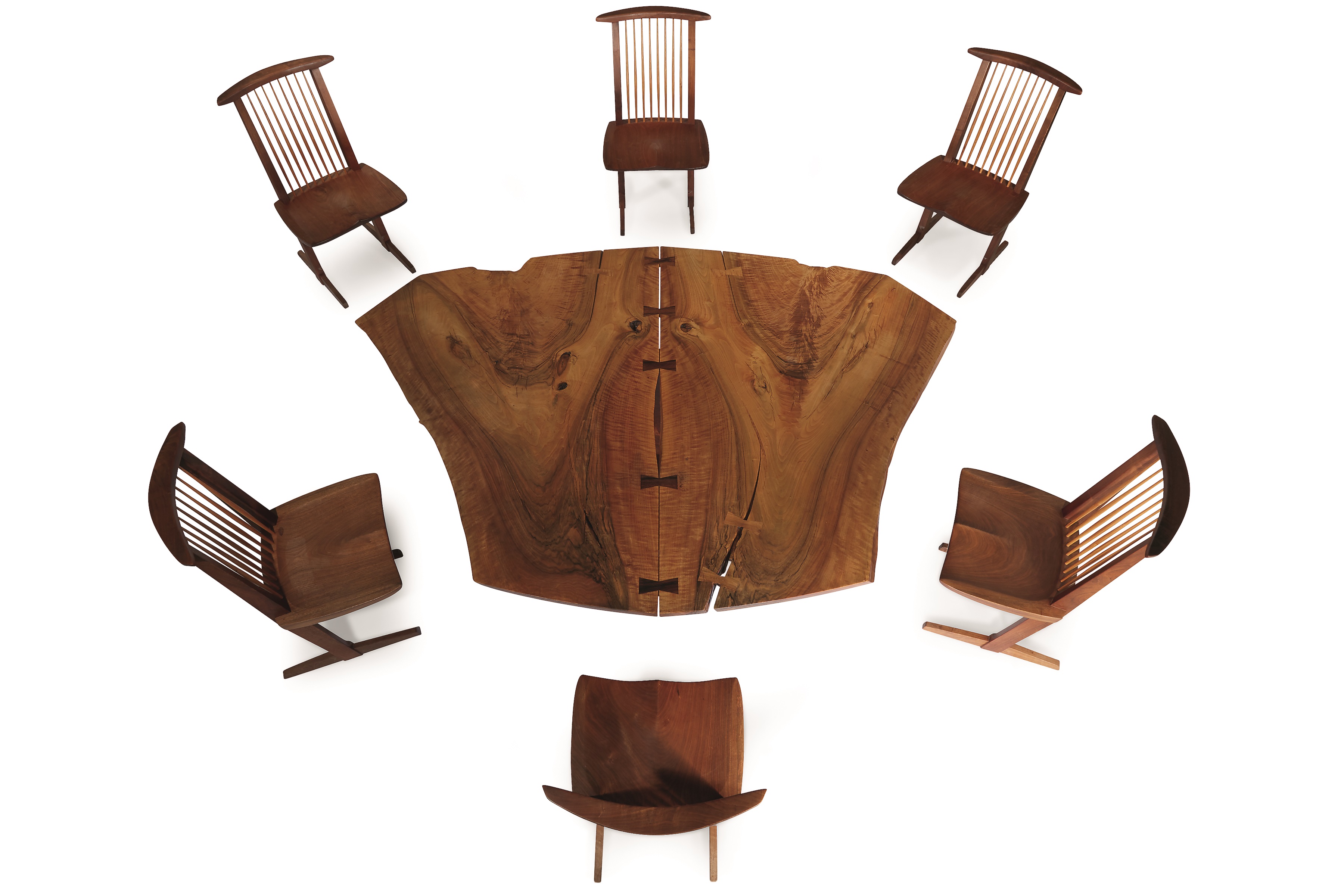RECORD! A Gus Wilson Duck Decoy Sold for $330,000

The Hot Bid is on Thanksgiving vacation today. I haven’t got anything turkey-related, so I’m celebrating by reposting a story on a record-breaking duck decoy.
What you see: A red-breasted merganser drake duck decoy, carved circa 1900 by Augustus “Gus” Wilson. It had been described as the finest Wilson decoy ever offered at auction. Copley Fine Art Auctions sold it in July 2014 for $330,000, achieving an auction record for the artist.
Who was Gus Wilson? He was a Maine native, boat builder, lighthouse keeper, and carver. He took up carving in his teens, probably learning the art from family members, and he remained active for most of his life. He died in 1950 at the age of 85 or 86.
How often do you see a Gus Wilson duck decoy carved with an open bill, as this one is? “It’s very infrequent,” says Stephen B. O’Brien Jr., owner of Copley Fine Art Auctions in Boston, Mass. “There’s less than a handful, and many of those [beaks] are broken off and replaced. The fact that this one is intact makes it a real survivor.”

What makes this Gus Wilson duck decoy exceptional? “It’s a big, bold carving. Wilson regularly produced larger, almost oversize carvings,” he says, alluding to the decoy’s generous measurements: seven inches wide, seven inches high, and more than 16 inches long. “It’s got a wonderful sense of sculpture. Combine that with the open bill, which is almost never seen, and it makes it a pinnacle work.
This is described as a “hunted” or “hunt-used” decoy, which means that a hunter actually put it out on the water to lure ducks. Are most Wilson decoys hunt-used? And do collectors prefer hunt-used decoys? “The vast majority of Gus Wilsons found were actually hunted,” O’Brien says. As for hunt-used versus pristine, he says, “It’s a very personal choice. It almost comes down to, in the art world, how some people are attracted to the real world and some people are attached to abstraction. I’m a hunter. I come at it from that perspective. I love a utility decoy that’s been hunted over, that has some wear that shows it was put to its intended use. But you don’t want it to have too much. With replaced heads, tail chips, and shot scars, it starts to take on some negatives. But you can miss out if all you want is pristine birds. They’re pretty hard to find.”
The decoy was carved around 1900. Where was Wilson in his career then? “It places him at about age 35. What’s nice about this merganser is the artist is at the height of his craft. There are subtleties that take more time to create,” he says, explaining that decoy carvers sometimes go through a period when they feel free to indulge in artistic flourishes that transcend the standard shape of the duck decoy–open beaks, fan tails, slightly extended wings–and abruptly stop when they see how their hand-carved treasures suffer nicks and breaks in the field.

How long do you think this auction record for a Gus Wilson duck decoy will stand? “It’s hard to say. As with any market, if the right piece came up and two people wanted it, the record could easily fall,” O’Brien says. “The decoy market has held up strong over the last 10 years relative to other [categories] in the antiques market. It wouldn’t shock me if it fell. Looking at it from the standpoint of being a great Gus Wilson, it’s probably a bargain price for what it went for.”
Are there any other Gus Wilson duck decoys that rival this one? “For me, I haven’t really seen it,” he says. “That’s why we put a heavy estimate on it. [The presale estimate was $350,000 to $450,000]. “He’s a pretty colorful, proud, bright bird. He had all the bells and whistles that collectors look for–the open bill, the cocked-back head, nice original paint, the paddle tail, and the original rigging [the weight on the bottom that lets the decoy float upright]. I can’t think of a better Gus Wilson decoy. If you asked me to own one Gus Wilson decoy, this would be it.”
How to subscribe to The Hot Bid: Click the trio of dots at the upper right of this page. You can also follow The Hot Bid on Instagram and follow the author on Twitter.
Copley Fine Art Auctions will hold its 2017 Sporting Sale on July 27 and 28 in Plymouth, Massachusetts.
Image is courtesy of Copley Fine Art Auctions.
Quack!
Would you like to hire Sheila Gibson Stoodley for writing or editing work? Click the word “Menu” at the upper right for contact details.


